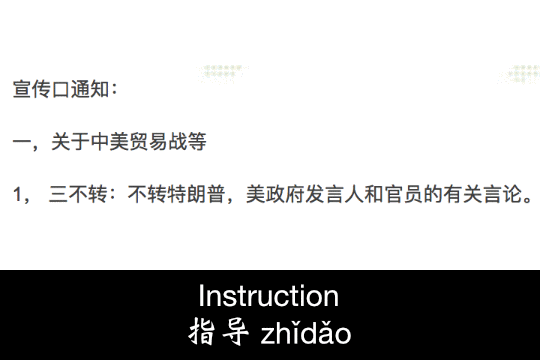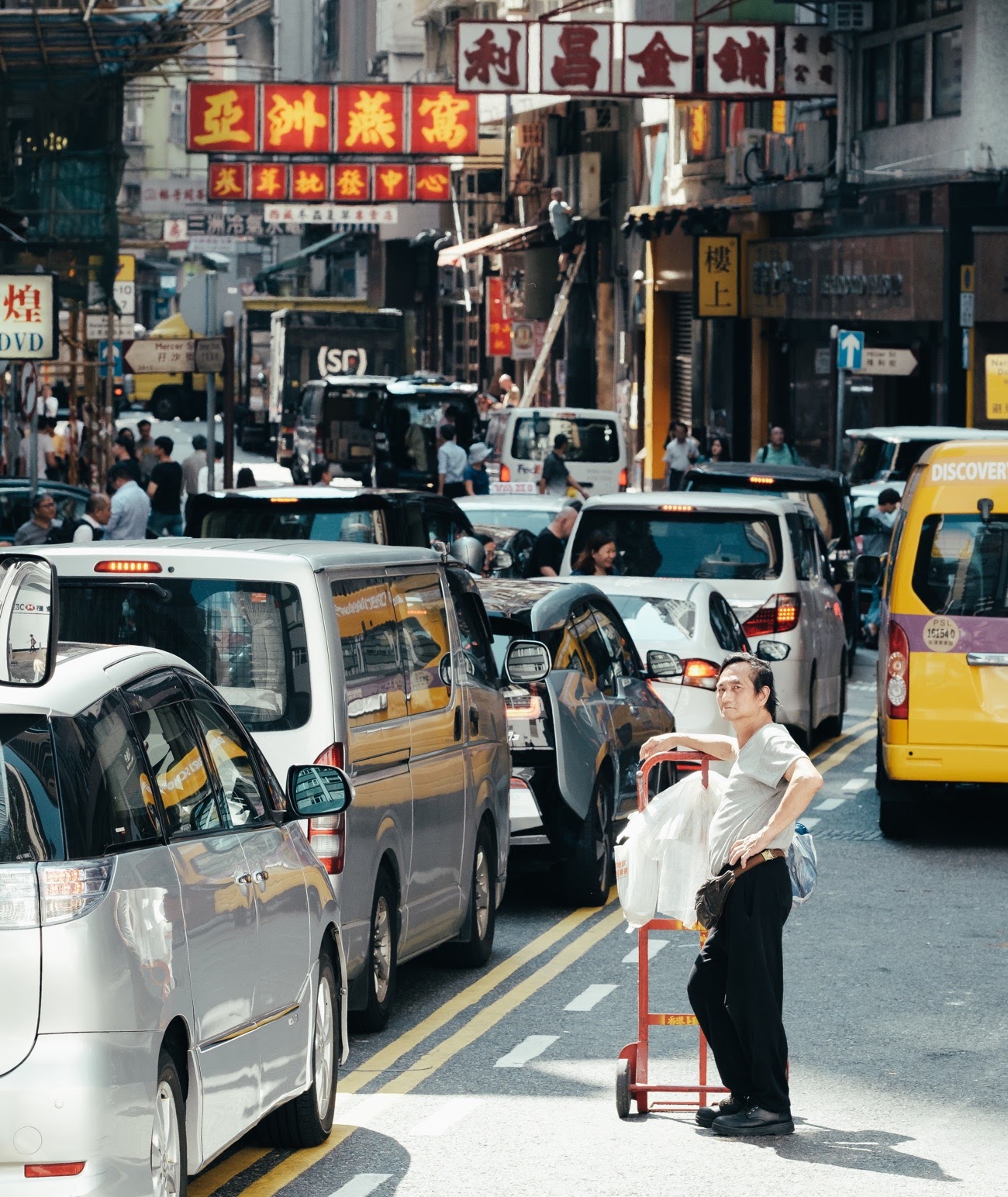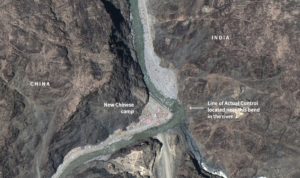Media instructions for a trade war


Hi there, Access members:
-
The next guest Q&A on our Slack channel will be with Rui Ma and Ying-Ying Lu, the duo behind the TechBuzz China podcast. Date and time TBA.
-
Early-access episodes of the Sinica Podcast are released on Mondays. To subscribe — and be among the first to listen to this week’s episode all about hacking in China — just plug this RSS feed directly into your podcast app. This week, we have a fascinating show with journalist Kevin Collier, who covers cybersecurity, and Priscilla Moriuchi, the American NSA’s former chief of monitoring “nation state threats” from China.
-
There’s a grab bag of news at the top — five stories — and the usual links and summaries below.
—Jeremy Goldkorn, Editor-in-Chief, and team

1. Media instructions for a trade war
China Digital Times has an ongoing series of censorship instructions called Directives from the Ministry of Truth. The latest installment is mostly about the U.S.-China trade conflict. Key instructions (quoted directly) are:
-
Don’t relay comments from Trump, from U.S. government spokespersons, or from U.S. officials. Don’t relay U.S. news reports or commentary on the trade conflict without waiting for response from the Ministry of Commerce.
-
We stop negotiation for now, acting tit for tat, roll out corresponding policies, hold public opinion at a good level without escalating it, limit scope, and strike accurately and carefully, splitting apart different domestic groups in the U.S. The trade conflict is really a war against China’s rise, to see who has the greater stamina. This is absolutely no time for irresolution or reticence.
-
Don’t attack Trump’s vulgarity; don’t make this a war of insults.
-
All media should prepare well for protracted conflict. Don’t follow the American sides’ fluctuating declarations. Play down the correlations between the stock market and trade conflict.
-
To re-emphasize: Do not make further use of Made in China 2025, or there will be consequences.
Other gloom, doom, trade, and boom news from the various fronts of the trade war:
-
“China will open up several industries to greater foreign investment, including airplane design and manufacturing, railway construction and agriculture,” according to Caixin (paywall), but of course “48 sectors remain on the ‘negative list,’ including entertainment, internet publications and law firms.” The full list is here (in Chinese).
-
“China fulfilled a pledge to slash tariffs on imported cars Sunday,” says the Wall Street Journal (paywall), “but the respite for auto makers who export to China from the U.S. will be brief as Beijing prepares to slap an additional 25% tariff on U.S. auto imports this Friday.”
-
The Sanmen nuclear power plant, designed by Westinghouse, is “at the centre of an $8 billion US-Chinese partnership and technology transfer agreement.” The Financial Times reports (paywall) that it “has delivered its first electricity to the Chinese grid, even as the countries square off in a looming trade war that threatens to derail future cooperation and stall US efforts to reboot its nuclear industry.”
-
“Chinese venture capital investment into US biotech companies in the first half has already surpassed the record set for the whole of last year, underlining Beijing’s focus on medicine as a strategic sector — a development that has flown under the radar of regulators in Washington,” according to the Financial Times (paywall).
-
“Donald Trump’s assault on trade with China is moving from tweeted threats and abortive talks to the real-world,” says Bloomberg (paywall), noting that “purchasing manager index readings for June released on Saturday showed a gauge of export orders tumbling into contraction, the clearest sign yet that the oncoming trade war is having a real, negative impact on growth.”
—Jeremy Goldkorn
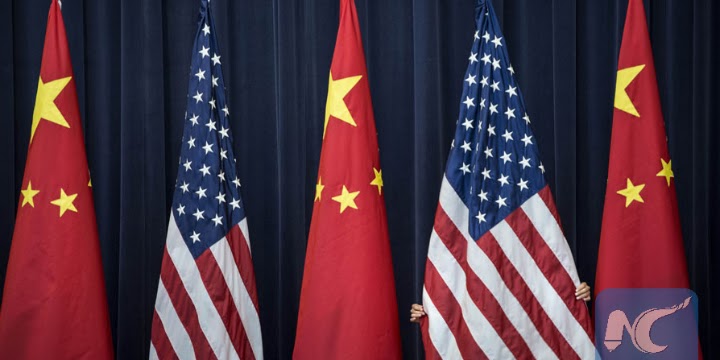
2. Beyond Trumpism: What is the ‘smart’ direction for U.S.-China relations?
Are the U.S. and China headed into a “Cold War 2.0”? Some object to the very question.
Michael Swaine, a senior associate at the Carnegie Endowment for International Peace, balks at what he describes on Twitter as the “wholly overblown effort underway to redefine the US-China relationship as one of near Cold War adversaries.” His piece in Foreign Policy, titled “The U.S. can’t afford to demonize China,” argues:
-
Washington, under Trump, has embraced a conspiratorial mindset that sees China and the U.S. as a zero-sum global power competition.
-
This mindset has supported “hugely distorted” assumptions that often go unchallenged, including the myth that the U.S. ever explicitly sought democratization as the end goal of engagement, the unproven claim that China “seeks to eject the United States from Asia and subjugate the region,” and the questionable line of thought that “Beijing is committed to overturning the global order.”
-
For more on Washington’s myth making about China, former diplomat Evan Feigenbaum recently wrote on the futility of American whining about China.
-
A “major correction by both sides” is needed in the relationship, Swaine argues, because “hostile words and actions completely overshadow the obvious and pressing need for continued cooperation between Washington and Beijing in addressing common problems and concerns, including climate change, weapon of mass destruction proliferation, pandemics, the state of the global economic system, and stability in Asia.”
-
Contrary to claims that China is a global-order wrecker, “Beijing supports many elements of the existing order, including some that the current U.S. administration rejects or undermines, such as the fight against climate change and the value of multilateral economic agreements.”
-
Trump’s America, in fact, seems to be the only country with major economic interests in the Asia-Pacific that isn’t negotiating a major trade deal there at the moment:
-
“Ministers from the 16-nation Regional Comprehensive Economic Partnership, which includes China, Japan and India but not the U.S., met in Tokyo on Sunday to try and thrash out remaining differences,” Bloomberg reports (paywall).
-
“The 11-member Trans-Pacific Partnership trade pact, which does not include the U.S., will prepare for its next stage of expansion when chief negotiators meet in Japan in mid-July to discuss how to usher new members in,” according to Nikkei (paywall).
-
But what would a better relationship with China, particularly in economic ties between the two countries’ technology sectors, actually look like? A collection of experts on China’s economy and rising technological capabilities have weighed in via a ChinaFile discussion titled, “Should the U.S. start a trade war with China over tech?”
-
Unsurprisingly, multilateral trade pressure over multiple domains — i.e., the exact opposite of Trump’s unilateral tariff-first tactics — is a widely suggested strategy.
-
Several respondents note that technology transfer is a feature, not a bug, of China-U.S. economic entanglement. Yukon Huang, the China economy contrarian who was interviewed on the Sinica Podcast earlier this year, also pointed to an American Chamber of Commerce in China report that shows 96 percent of respondents think intellectual property rights are improving in China.
-
More investment in science and technology at home, and consistency in limiting Chinese investment only in cases of very obvious national security risk, is another common suggestion. Jack Zhang of Princeton University writes, “Nothing would vindicate Chinese techno-nationalists more than for the U.S. to follow them down the road of state-intervention in the technology sector.”
—Lucas Niewenhuis

3. After banning foreign waste, China moves to expand recycling
China drew international attention earlier this year when it announced it would no longer import other countries’ waste. A few months down the line, authorities are gearing up to bolster the country’s lackluster domestic recycling system.
-
23 percent of all potentially recyclable materials in China were recycled in 2013, according to the State Council’s National Development and Reform Commission, although experts estimate the total was closer to 30 percent in 2017. Sarah Talaat reports for The China Project that Chinese recycling companies, local governments, and entrepreneurs are now exploring ways to morph China’s haphazard domestic recycling into a successful business model, and to bring recycling awareness into daily public life.
-
The most significant roadblock could be public awareness. Many Chinese people lack knowledge and resources to carry out recycling effectively, but the Ministry of Urban Development aims to have trash classification in “all cities at prefecture-level and above by 2020,” according to Sixth Tone.
-
“The ministry’s target is for 35 percent of urban household waste to be recycled by 2020,” Sixth Tone adds.
-
In other waste-management news, five people have been ordered to pay $1.1 million for industrial dumping in southern China, Caixin reports (paywall). The case is believed to be China’s first public-interest lawsuit against ocean pollution.
—Lucy Best
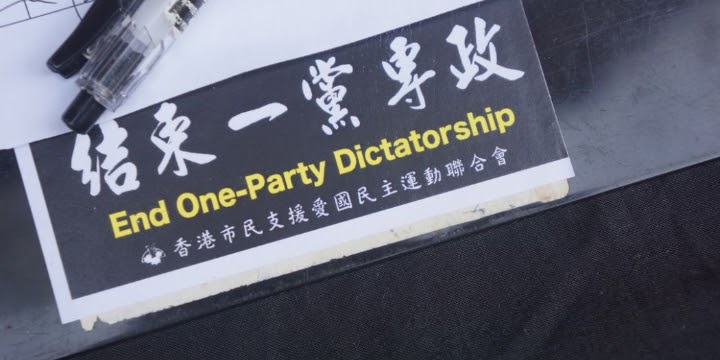
4. Another rocky anniversary of Hong Kong’s handover to mainland China
July 1 marked the 21st anniversary of Hong Kong’s return to mainland China. As usual, the date did not go without notice or controversy in the city.
-
An annual demonstration centers on supporting democratic values, but participants also take the opportunity to highlight other issues in Hong Kong and in China. This year, protestors called for an end to the new Chinese police presence in a Hong Kong train station and to Liu Xia’s house arrest, and — for the first time — an end to one-party rule in China, the New York Times reports (paywall).
-
There may be a decline in public interest or willingness to participate in this demonstration. According to the Times, organizers said about 50,000 people came out to protest, one of the lowest turnouts since the march’s 2003 inception.
-
The Hong Kong government was not pleased with the demonstrations. “[C]hanting slogans which disrespect ‘one country’ and disregard the constitutional order or which are sensational and misleading was not in line with Hong Kong’s overall interests and would undermine its development,” a government press release declared, according to the Hong Kong Free Press.
-
Police apprehended 20 protestors from getting near a flag-raising ceremony commemorating the handover from Britain to China, the Guardian reports.
-
See pictures of the protest at Hong Kong Free Press.
-
In this week’s Kuora, Kaiser Kuo uses an apt analogy to sum up the Hong Kong-mainland Chinese relationship: They are twins who were separated at birth, now united — and disposed to throwing tantrums at each other. That’s how the two sides see each other, anyway.
—Lucy Best
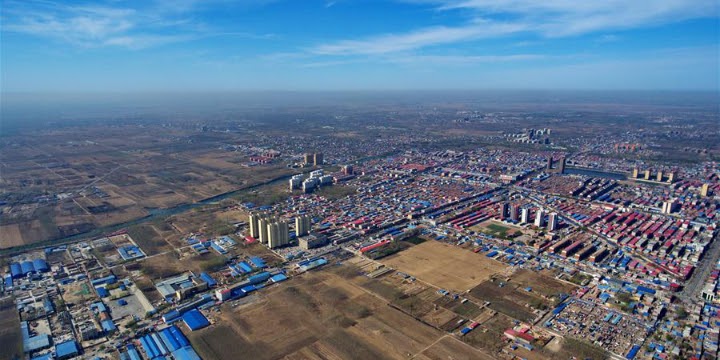
5. Xiong’an: A waste of resources or urban planning’s future?
With China’s mixed record and lengthy history of urban planning experiments, domestic and international observers alike have expectedly waited for developments from the city of Xiong’an, 100 kilometers southwest of Beijing. The city-by-fiat, announced last year to real estate spectators’ delight, is the latest darling of China’s push for high-quality urbanization in anticipation for rapid economic development.
-
Xiong’an is the work of the central government, unlike many failed locally headed urban experiments, Chinadialogue reports. This quality puts it alongside China’s two greatest urban planning miracles — Shenzhen and Shanghai’s Pudong District. It also provides an extra incentive for success, as it could serve as a civilian gauge on the central leadership’s efficacy.
-
“With the aim of establishing Xiong’an as a new model for urban planning, the government wants to create a hub for high-tech industry, innovation, and sustainable financing,” Chinadialogue adds. The city plans to become a testing site for sustainable housing, water purification, and energy systems. If successful, the model could spread throughout China and even gain prominence internationally through the Belt and Road initiative.
-
In addition to the government’s trillion-yuan investment in the city, China Southern recently pledged 10 billion yuan ($1.5 billion), Bloomberg reports (paywall). Other notable private-sector partners are Baidu and Alibaba, which will work in the city’s transportation sector.
-
The challenges of any city persist in Xiong’an, despite its plentiful resources. One example is the limited success of a $15,000 cleanup effort for a pond in Donghegang, Caixin reports (paywall). According to an engineer working on the effort, “Household wastewater continues flowing into the pond through the outfall below,” making permanent pollution mitigation challenging.
—Lucy Best
—–
Our whole team really appreciates your support as Access members. Please chat with us on our Slack channel or contact me anytime at jeremy@thechinaproject.com.
—Jeremy Goldkorn, Editor-in-Chief
 BUSINESS AND TECHNOLOGY:
BUSINESS AND TECHNOLOGY:
-
Biotech
WuXi AppTec aims for second listing in Hong Kong / Caixin (paywall)
The move takes advantage of “recently revised rules that allow companies from certain high-growth sectors to list on the city’s main board even if they are losing money.” -
Tax cut in the works
China plans income tax cut to boost consumption and reduce inequality / FT (paywall) -
China-Japan competition
China backs $15bn tech fund to compete with Japan’s SoftBank / FT (paywall) -
Taiwanese tech
Taiwan’s technology secrets come under assault from China / WSJ (paywall)
“Taiwanese government officials and company executives say China is deliberately targeting Taiwan, whose manufacturers make chips for the biggest American companies, including Apple Inc., Nvidia Corp. and Qualcomm Inc.” -
Battery market boom
China’s firms are scouring the world for mineral ores in pursuit of nation’s electric dream / SCMP
Cobalt, lithium and nickel are booming due to China’s insatiable appetite for electric vehicles / SCMP
More on The China Project: BYD builds biggest battery factory for electric cars -
China-Africa investments
Chinese investments In Nigeria telecoms hit $16bn / Economic Confidential
“China’s increased involvement in the African telecommunications industry is part of a multidimensional engagement in the continent to serve its broader strategy to enhance its global standing, counter Western influence and to obtain resources and new export markets to feed its rapidly expanding economy.” -
Chemical company merger
China’s chemical giants to share a chairman, signaling a merger / WSJ (paywall)
“A single chairman has been named to lead China’s two state-owned industrial-chemical giants, a move that likely foreshadows the long-expected combination of the two companies.” -
Stocks
China rebound gone within a day as even biggest stocks crumble / Bloomberg (paywall)
“In a further sign of capitulation, state-owned giants are bearing the brunt of the declines, with index heavyweight Industrial & Commercial Bank of China Ltd. plunging the most since February.”
Nikkei Asia300 falls as investors await US-China trade tariffs / Nikkei Asian Review
“If the first round of U.S.-China tariffs goes into effect as scheduled this Friday, assumptions of Trump merely using the tariff threats as a negotiating tactic would prove grossly incorrect.”
China exports cool, markets fall as US trade tensions rise / Asia Times
“Markets in China are feeling the heat as growth in the manufacturing sector shows signs of cooling amid rising tensions between Washington and Beijing.” -
Trumpworld corruption
Son of US envoy to China used Trump ties to lure business / WSJ (paywall)
“Eric Branstad, a son of Ambassador Terry Branstad, and the U.S. Commerce Department’s liaison to the White House until January, spoke on Thursday in Shanghai to more than 100 lawyers, bankers and advisers at a seminar entitled ‘How to React To (Potential) US-China Trade War?’” -
Douyin suspended
Chinese video app Douyin counts the cost of insulting Korean war hero as advertising halted / SCMP
“The hugely popular Chinese short video app Douyin has suspended its commercial operations after an internet watchdog weighed in on a controversy involving insulting remarks made about a Korean war hero.” -
Tech in healthcare
China counts on AI to find a cure for its ailing health care system / SCMP
“In China, health care has become one of the latest applications for AI, along with security and new retail, where technologies like natural language processing and computer vision are being applied to greatly improve efficiency in a country with an acute shortage of qualified doctors and nurses.”
China eager to embrace tech to meet overflowing health care demands / SCMP -
With more than 200 million Chinese people over 60, technology could be the lucky break China’s overburdened healthcare system needs.
-
New plans for Guangzhou airport
Guangzhou airport expansion plans could see 30 new international flights in next three years / SCMP
“Guangzhou is expected to have 30 new international flights in three years, increasing its reach to more than 100 cities globally as local authorities strive to market Baiyun Airport as an aviation hub.” -
European Union
China urged to give foreign companies a fair chance to compete with domestic firms / SCMP
“China should take concrete steps to ensure foreign companies enjoy a level playing field, especially in key hi-tech sectors, the outgoing German ambassador to Beijing has said.”
European businesses in China are ‘hurting’ from Donald Trump’s trade war threats, EU chamber says / SCMP
‘The EU is possibly as bad as China’ on trade, Donald Trump says in Fox interview / SCMP
In an ally-bashing rant, Trump complained, “The European Union is possibly as bad as China, only smaller… They send a Mercedes in, we can’t send our cars in. Look what they do to our farmers. They don’t want our farm products. Now in all fairness they have their farmers… But we don’t protect ours and they protect theirs.” -
China in space
Rocket startup iSpace receives $90 million in funding this year / Caixin (paywall)
“A young rocket startup said it has received financing worth 600 million yuan ($90.6 million) within a year, as China hopes to send its space industry into orbit in the coming years.”
China aims to outstrip NASA with super-powerful rocket / Times of India
“China is working on a super-powerful rocket that would be capable of delivering heavier payloads into low orbit than NASA.”
POLITICS AND CURRENT AFFAIRS:
-
Animal trade
China issues permits to trade in the bones of hundreds of leopards / EIA International
“Leopards are Asia’s most trafficked big cat, with more than 4,900 seized from illegal trade in Asia since 2000 – but despite this, new evidence indicates the Government of China is issuing permits to trade and use their bones.” -
Outrage over alleged plan to export rare animals from Congo to China / The Guardian
“Mountain gorillas and other endangered species from the Democratic Republic of the Congo are at risk of being taken from the wild and exported to Chinese zoos, conservation groups have alleged.” -
Weapons design
China brings Star Wars to life with ‘laser AK-47’ that can set fire to targets a kilometre away / SCMP
“The ZKZM-500 laser assault rifle is classified as being ‘non-lethal’ but produces an energy beam that cannot be seen by the naked eye but can pass through windows and cause the ‘instant carbonisation’ of human skin and tissues.” -
North Korea asks Beijing for economic relief
North Korea’s Kim asked China to bring early end to sanctions: Yomiuri / Reuters
“Xi said he would make the ‘utmost effort’ in response to Kim’s request.”
North Korean economic official arrives in China as Pyongyang continues to lean on Beijing for support / SCMP
“A senior North Korean economic policy official is visiting China in the latest sign Pyongyang wants to boost its engagement with Beijing to revive its economy, which has been squeezed by UN sanctions.” -
China-Australia business deal falls through
China’s debt-laden HNA quits $200 million Australian logistics deal / Reuters
“China’s debt-saddled HNA Group Co Ltd canceled its A$280 million ($207 million) purchase of an Australian logistics business on Monday, with the seller citing cashflow problems at the conglomerate among reasons for the deal’s collapse.” -
Debt and urban renewal
Slum redevelopment draws debate over government debt, housing prices / Caixin (paywall)
“Reports last week that the China Development Bank (CDB) had halted funding for new shantytown redevelopment projects across the country have highlighted the unintended problems the national slum-clearing effort has caused in recent years.” -
Social credit
Credible threat? Taiwan, websites, and social credit / China Law Translate
As companies increasingly shift their naming policies to align with the Chinese government’s interests, experts have begun examining how a Chinese social credit system could affect international commerce. -
Understanding Xi
Why Xi Jinping’s China is legalist, not Confucian / China Channel
Xi Jinping “reaches for Confucianism to serve as a pleasant façade to cover the unkinder reality of Legalist authoritarianism, advocating for ‘integration of the rule of law and the rule of virtue.’” -
Veteran protest (?) aftermath
Chinese leaders gather for back-to-back meetings after military veterans protest / SCMP
“Senior Chinese officials gathered for two high-profile meetings over the weekend as they scramble to placate military veterans after thousands took to the streets last month to demand better welfare rights and an end to violence against them.” -
Mattis visit to Beijing: The aftermath
US Defence Secretary Jim Mattis’ visit to Beijing did little to soothe tensions / SCMP
Ankit Panda, a senior editor of the Diplomat magazine, argues that the trip appeared to be a “missed opportunity.” He writes, “Mattis’ trip could have gone much worse than it did, but one is left with the sense that the visit did little to divert the United States and China away from a trajectory of increased friction and overt competition.”
On The China Project: Mattis visits Beijing as South China Sea tensions bubble. -
Mystery illness at U.S. Guangzhou consulate
More Americans evacuated from China over mysterious ailments / NYT (paywall)
“The cases in Guangzhou — and now possibly Shanghai and Beijing — are similar to a wave of illnesses that struck Americans working at the embassy in Havana, Cuba, beginning in fall 2016.” -
Belt and Road ?
There’s no Chinese ‘debt trap’, says Myanmar minister, as government pushes for joint port project to go ahead / SCMP
Myanmar’s union minister and security adviser Thaung Tun dismissed the fear of a “debt trap,” stating the port development project would be a “win-win” deal. -
Is the U.S. a dangerous place for Chinese tourists?
Chinese tourists in United States told to beware of shootings, expensive medical care / SCMP
China’s embassy in the U.S. recently put out a notice warning would-be Chinese tourists about unsatisfactory social security and healthcare, customs regulations, and crime, among other issues.
SOCIETY AND CULTURE:
-
Criminal justice
China ‘should prosecute juveniles from age 12’ after boy, 13, accused of scissor attack on girl is let off / SCMP
“There have been calls for China’s age of criminal responsibility to be lowered from 14 to 12 after police said the case of a 13-year-old boy accused of attacking a 14-year-old girl was thrown out because he was too young to be prosecuted.” -
Shanghai stabbing
Shanghai school stabbing suspect arrested on homicide charges / Sixth Tone
“The 29-year-old man suspected of stabbing four people at a Shanghai primary school has been arrested on homicide charges.” -
Maternity trends
Foreign births soar as local births drop at epicentre of Chinese maternity tourism in Canada, new statistics show / SCMP
“Newborns with non-resident mothers at Richmond Hospital rose by 23.8 per cent in the 2017/2018 financial year – compared to 2016/2017 – and made up 22.1 percent of all newborns at the hospital outside Vancouver.”
Worried about miscarriage? Take some time off, says new Chinese law / Inkstone
In the newest installment of Chinese regulations to increase the birth rate, Jiangsu has passed a law allowing mothers with a doctor’s note to receive leave at 80 percent pay. -
A cuisine lost in translation
“How would the Michelin Guide understand Chinese street food?” / Quartz
“For local Cantonese, a dinner of 3,000 yuan ($450) or private kitchens can never match a drive for pork offal porridge in Panyu district, fish fresh from the ponds in Shunde city, or river food in the countryside.” -
Sexual harassment: Creeps arrested
Chinese peeping Tom installed secret cameras to film couples in love hotels and sell footage online / SCMP
“The two cameras he is accused of installing then had been connected to the power strip in the ceiling and could be automatically turned on when the customers plugged in the room key.”
118 Chinese men detained for groping women on Beijing subway trains / SCMP
“Women have long complained of sexual harassment on China’s subway network, especially during peak hours when the trains is packed like sardine cans and physical contact is hard to avoid.” -
Forbidden City pets
Palace museum says goodbye to forbidden city celebrity cat Baidian / What’s on Weibo
Despite Forbidden City staff’s best efforts, famous Forbidden City stray Baidian passed away last week, prompting an outpour of social media posts about his life. -
Naked foreigner running amok prompts drug bust
Drug gang busted after laowai gets stoned out of his mind, goes on naked rampage / Shanghaiist
“Police in Guangzhou have recently revealed more details regarding a drug bust which began with a naked foreigner running around the street and terrorizing passersby while armed with a bicycle… The gang specialized in selling marijuana to foreign students.” -
When cross-cultural stories don’t work
Pixar’s dumpling short Bao is polarizing audiences with cultural themes / Polygon
“When people don’t get a cameo at the end of a Marvel movie, they Google it for better understanding (trust us on that one). Yet more often than one might expect, when people are confronted with a particular cultural experience that they don’t get, the confusion rarely seems to turn into curiosity. Instead, it becomes a source of bewildered judgment.” -
Traffic accidents
18 killed, 14 injured in China bus-truck highway collision / AP
“The accident took place Friday evening in Hunan province south of Beijing. Video from the scene showed both heavily damaged vehicles along the rain-slicked highway. It appeared that one of the vehicles may have crossed a center divider.”
Bus company dismisses fatigue claims in collision that killed 18 / Sixth Tone
“The company operating the passenger coach involved in Friday’s deadly highway collision in central China has urged media outlets to refrain from making ‘irresponsible remarks’ following reports of driver fatigue.”
VIDEO OF THE DAY
Viral on Weibo: ‘Ink Shooting,’ a new form of calligraphy?
Chinese artist Shao Yan, 56, uses syringes to make a form of calligraphy. A video of him squirting ink on a paper scroll has gone viral.
ON SUPCHINA
Kuora: Hong Kong and mainland China are twins separated at birth
July 1 marked the 21st anniversary of Hong Kong’s return to mainland Chinese control. This week’s column, originally posted to Quora on December 13, 2014, looks at how Hong Kongers and mainland Chinese think of each other, and was written near the end of one of the most momentous events in Hong Kong’s recent history, the two-and-a-half-month-long pro-democracy Umbrella Movement.
The Caixin-Sinica Business Brief, Episode 54
In this installment, Kaiser discusses the latest business news in China and sits down with Caixin reporter Tanner Brown to talk about a 19-year-old woman’s recent suicide after a teacher allegedly sexually assaulted her.
-
Subscribe to the Business Brief on Apple Podcasts, Overcast, or Stitcher.
PHOTO FROM MICHAEL YAMASHITA

The Mazu pilgrimage march
Pilgrims cross the Xi Luo Bridge in Taiwan in pouring rain on the third day of the Dajia Mazu Pilgrimage parade in April 2016. The annual parade celebrates Mazu, the goddess of the sea and Taiwan’s most popular deity, and usually takes place for nine days.
—Jia Guo
